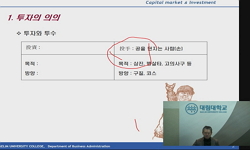지구화시대 한국사회에서 여성적 빈곤은 재생산된다. 이 논문의 목적은 빈곤의 세계화와 빈곤의 여성화하고는 다른 개념으로 사용하는 여성적 빈곤의 문제를 여자들1)의 공간과 자본의 관...
http://chineseinput.net/에서 pinyin(병음)방식으로 중국어를 변환할 수 있습니다.
변환된 중국어를 복사하여 사용하시면 됩니다.
- 中文 을 입력하시려면 zhongwen을 입력하시고 space를누르시면됩니다.
- 北京 을 입력하시려면 beijing을 입력하시고 space를 누르시면 됩니다.
https://www.riss.kr/link?id=A76136627
- 저자
- 발행기관
- 학술지명
- 권호사항
-
발행연도
2005
-
작성언어
Korean
-
주제어
여성적 빈곤 ; 여자들의 공간 ; 자본 ; 세계화 ; 공간적 대응 ; 성별화/성화 ; 가사노동 공간 ; 성적서비스 공간 ; 비정규직 공간 ; 이주노동 공간 ; (노동)공간 분절 ; female poverty ; capital ; globalization ; women's space ; alternative space ; division of labour ; division of space ; domestic/sex-service/irregular labour
-
등재정보
KCI등재
-
자료형태
학술저널
- 발행기관 URL
-
수록면
5-37(33쪽)
- 제공처
-
0
상세조회 -
0
다운로드
부가정보
국문 초록 (Abstract)
여자들을 공간화하는 방식은 성별화(젠더화)와 성화(섹슈얼리티화)로 나누어지고, 이것을 기반으로 자본은 기존 성별화된 공간과 성화된 공간을 재생산하고 재구조화한다. 기존 성별화/성화된 공간이 재생산되는 양상은 가사노동, 성적 서비스 노동, 비정규직 노동으로의 노동 분절과 공간 분절로 나타난다. 그리고 이 분절은 국가, 민족, 인종의 분절로 재구조화된다. 그리고 가사노동의 이상화와 성적서비스노동의 매춘화는 임노동 공간의 여성노동을 성별화 혹은 성화하는 방식으로 또 다시 작동된다. 임노동 공간의 여성노동은 성별화와 성화로 분류되고 특징지워지는 경향이 있다. 소위 말하는 여성 직종은 젠더화와 섹슈얼리티화를 통해 자본에 복속하는 저임금노동, 시간제노동으로 화한다. 여자들은 자본의 서열화와 차등화를 특색으로 하는 공간화를 거치면서 서로 다른 공간에 배치 혹은 재배치된다.
지구화시대 한국사회 여성들의 공간과 공간화를 보는 이유는 자본과 가부장제의 공모로 인한 여성적 빈곤을 벗어날 길을 모색할 대안을 찾기 위한 것이다. 여자들은 공간에 배치되기도 하지만 동시에 공간을 선택하기도 한다. 이 논문은 이러한 공간의 서열화를 여자들이 스스로 보고, 그 공간에 대한 주체적 인식을 하게 됨으로써 불연속적인 것으로 보이고 불연 속성으로 갈라진 공간들을 나와 대안적 공간을 실천하는 행위자가 될 수 있다는 전제하에 대안적 공간에 대한 사유를 해 보기 위한 전초 작업이다.
지구화시대 한국사회에서 여성적 빈곤은 재생산된다. 이 논문의 목적은 빈곤의 세계화와 빈곤의 여성화하고는 다른 개념으로 사용하는 여성적 빈곤의 문제를 여자들1)의 공간과 자본의 관계를 통해 살피는 것이다. 지구화시대 한국사회도 지구화가 불러온 영향으로부터 자유롭지 못하다. 상품, 자본, 노동력의 이동이 일어나는 현장인 한국사회에서 자본은 여자들을 공간화함으로써 여자들의 빈곤을 재생산한다.
여자들을 공간화하는 방식은 성별화(젠더화)와 성화(섹슈얼리티화)로 나누어지고, 이것을 기반으로 자본은 기존 성별화된 공간과 성화된 공간을 재생산하고 재구조화한다. 기존 성별화/성화된 공간이 재생산되는 양상은 가사노동, 성적 서비스 노동, 비정규직 노동으로의 노동 분절과 공간 분절로 나타난다. 그리고 이 분절은 국가, 민족, 인종의 분절로 재구조화된다. 그리고 가사노동의 이상화와 성적서비스노동의 매춘화는 임노동 공간의 여성노동을 성별화 혹은 성화하는 방식으로 또 다시 작동된다. 임노동 공간의 여성노동은 성별화와 성화로 분류되고 특징지워지는 경향이 있다. 소위 말하는 여성 직종은 젠더화와 섹슈얼리티화를 통해 자본에 복속하는 저임금노동, 시간제노동으로 화한다. 여자들은 자본의 서열화와 차등화를 특색으로 하는 공간화를 거치면서 서로 다른 공간에 배치 혹은 재배치된다.
지구화시대 한국사회 여성들의 공간과 공간화를 보는 이유는 자본과 가부장제의 공모로 인한 여성적 빈곤을 벗어날 길을 모색할 대안을 찾기 위한 것이다. 여자들은 공간에 배치되기도 하지만 동시에 공간을 선택하기도 한다. 이 논문은 이러한 공간의 서열화를 여자들이 스스로 보고, 그 공간에 대한 주체적 인식을 하게 됨으로써 불연속적인 것으로 보이고 불연 속성으로 갈라진 공간들을 나와 대안적 공간을 실천하는 행위자가 될 수 있다는 전제하에 대안적 공간에 대한 사유를 해 보기 위한 전초 작업이다.
다국어 초록 (Multilingual Abstract)
Capital's way of spatialization is through gendering and sexualizing, and it reproduces and restructures the previous gendered and sexualized space of women. The way to reproduce the gendered and sexualized space is through the space-division of home, sex-service places, and working places and through the labor-division of domestic labour, sex-service labour and irregular labour. These divisions are restructured by the division of nation and race. The idealization of the domestic labour and the prostitution of the sex-service labour are related to the gendering and sexualizing of the women's labour in the wage labour space. Women, taking the so-called ‘female job', become the subject of capital by becoming a low-paid worker and hour-paid worker. Women, through capital's classification, hierarchy and differentiation, are placed and replaced in different social spaces: domestic labour space, sex-service space,. irregular female job space, and migrant labour space.
The reason to analyse the capital's spatialization of women is to seek the way to be out of the female poverty formed by the conspiracy or collaboration of capital and patriarchy. Thus women is structured into the space, however, women in individual level or in collective level can become agents of choosing space, too. Women can be agents to come out of the divided female spaces and create alternative spaces. To come out from the structured space is not easy, but recognizing the division and differentiation, women can start to think about the patriarchal capital's conspiracy and to attempt to create a new space. So far, the alternative spaces created by the women's activism have presented good examples. But in the age of globalization, women's activism requires a different apporach to the creation of the alternative spaces: spaces crossing the female division and spaces crossing the boundaries of nation, race, and class by refusing the capital's way of gendering and sexualizing.
The aim of this paper is to see the relationship between capital and the female space to reconsider the female poverty. The female poverty, which is different from the ‘feminization of poverty' and the ‘globalization of poverty', is being reproduc...
The aim of this paper is to see the relationship between capital and the female space to reconsider the female poverty. The female poverty, which is different from the ‘feminization of poverty' and the ‘globalization of poverty', is being reproduced in the age of globalization. In the global age, Korean society is also not free from the effect of globalization. Capital is reproducing the female poverty by spatializing women in the globalized space of the movement of product, capital, and labour.
Capital's way of spatialization is through gendering and sexualizing, and it reproduces and restructures the previous gendered and sexualized space of women. The way to reproduce the gendered and sexualized space is through the space-division of home, sex-service places, and working places and through the labor-division of domestic labour, sex-service labour and irregular labour. These divisions are restructured by the division of nation and race. The idealization of the domestic labour and the prostitution of the sex-service labour are related to the gendering and sexualizing of the women's labour in the wage labour space. Women, taking the so-called ‘female job', become the subject of capital by becoming a low-paid worker and hour-paid worker. Women, through capital's classification, hierarchy and differentiation, are placed and replaced in different social spaces: domestic labour space, sex-service space,. irregular female job space, and migrant labour space.
The reason to analyse the capital's spatialization of women is to seek the way to be out of the female poverty formed by the conspiracy or collaboration of capital and patriarchy. Thus women is structured into the space, however, women in individual level or in collective level can become agents of choosing space, too. Women can be agents to come out of the divided female spaces and create alternative spaces. To come out from the structured space is not easy, but recognizing the division and differentiation, women can start to think about the patriarchal capital's conspiracy and to attempt to create a new space. So far, the alternative spaces created by the women's activism have presented good examples. But in the age of globalization, women's activism requires a different apporach to the creation of the alternative spaces: spaces crossing the female division and spaces crossing the boundaries of nation, race, and class by refusing the capital's way of gendering and sexualizing.
목차 (Table of Contents)
- Ⅰ. 지구화시대의 빈곤: 빈곤의 세계화, 빈곤의 여성화와 여성적 빈곤
- Ⅱ. 여자들의 공간과 자본
- Ⅲ. 지구화시대 여성노동공간의 분절: 성별화와 성화
- Ⅳ. 자본의 공간 분절에 대응하기
- 참고문헌
- Ⅰ. 지구화시대의 빈곤: 빈곤의 세계화, 빈곤의 여성화와 여성적 빈곤
- Ⅱ. 여자들의 공간과 자본
- Ⅲ. 지구화시대 여성노동공간의 분절: 성별화와 성화
- Ⅳ. 자본의 공간 분절에 대응하기
- 참고문헌
- 〈Abstract〉
동일학술지(권/호) 다른 논문
-
- 한국여성학회
- 남정림(Nam Jeong Lim)
- 2005
- KCI등재
-
- 한국여성학회
- 손승영(Sohn Seong Young)
- 2005
- KCI등재
-
- 한국여성학회
- 황정미(Hwang Jung-Mee)
- 2005
- KCI등재
-
- 한국여성학회
- 이재경(Lee Jae Kyung)
- 2005
- KCI등재





 DBpia
DBpia






